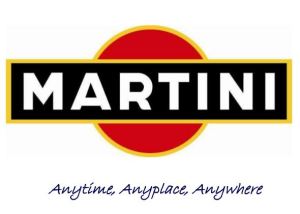
I’ve been reviewed and restructured. Again. It’ happens a lot. This time I’ve been shifted from technology to academic practice. Sounds good. Our new role is teaching enhancement – which might or might not involve technology – but unlike TEL Advisor colleagues, my role at Hull was ‘Academic’ TEL Advisor so ‘pedagogy first’ from the start.
Over the years, through research as well as practice, I’ve tried to understand where the TEL promise went wrong. Because it did. It has. To this day, TEL remains the domain of the few rather than the many.

It’s 20 years since the The National Committee of Inquiry into Higher Education (1997). The Dearing Report presaged the influence of the internet on HE in terms of globalisation, employability and virtual learning environments. From the start VLE were for the ‘acquisition and delivery of electronic information [including] techniques to improve the management of the teaching and assessment process’ (13.16)
Which words jump out at you? Delivery? Information? Management? If you replace Techniques’ with pedagogy then it could mean active learning but the sentence still reeks of things teachers do rather than students. Language matters so much. Discourse analysis is dead. Statements are accepted at face value (think social media + elections) while the final remnants of postmodernism are smothered by a return to positivism. A rant is brewing. I digress…

Dearing offers pockets of hope e.g. VLE require ‘a radical change in attitudes’ (33) because ‘… many staff still see teaching primarily in terms of transmission of information, mainly through lectures’ (8.14). The shift from passive to active pedagogies is welcome, as is development of an effective strategy which involves ‘…guiding and enabling students to be effective learners, to understand their own learning styles, and to manage their own learning.’ (8.15) The concept of ‘learning styles’ has been rightfully challenged (Coffield, 2013) but the principle of autonomous, independent learning remains a keystone of higher education today. However, the problems outlined 20 years ago remain. The internet influences attitudes and practices, employers want digitally capable graduates and institutions continue to make massive investments in technology, chasing that elusive golden technology egg.

There is a mis-match. An on-campus digital divide. Witnessing reluctance and resistance towards digital ways of working is a common occurrence. The technophobes outweigh the technofans 100-1. When it comes to developing ‘digital capabilities’ (the latest buzz-phrase for digital competence and confidence) there is no ‘one-size-fits-all-model’. To become ‘digital’ involves a cultural shift, a deep-rooted change in attitudes and beliefs. Filling in a survey or attending a workshop isn’t going to cut it. Neither is the practice of offering online resources to the digitally shy.

Last week I posted a photo of my phd-floor with the hundred plus papers at the core of my literature review. Annotated, highlighted, torn at the edges, covered in coffee stains – I have digital devices, including a Kindle, but this is my preference. The papers are the tangible, visible evidence underpinning my thesis chapter. They help me ‘see’ the structure and content in a way a table of contents doesn’t.


Yet I believe VLE have the potential for genuine HE experiences which challenge and stretch. Section 8 of the Dearing Report Students and Learning outlines the C&IT future for higher education. Even with the benefit of hindsight, it is prescient reading. VLE can support ‘…tutorials, simulations, exercises, learning tools and educational games can be highly interactive and provide activities that students need to develop their understanding of others’ ideas and the articulation of their own.’ [8.21) From my own experience, in particular the OU’s MA in Open and Distance Learning, I agree with this and with the list in section 8.2 of the potential affordances of computer-based programmes. But I don’t like this phrase.
Digital education is about the person against the machine. So far the Turing Test remains unpassed. Education is fundamentally a social experience yet Dearing acknowledges ‘…personal contact between teacher and student, and between student and student, gives a vitality, originality and excitement that cannot be provided by machine-based learning, however excellent…individuals are likely to choose to receive information and experience in the company of others, rather than alone.’ (8.21)

For me, the phrase ‘machine based learning’ brings home the reality of TEL in HE being a human v technology binary. Highly rated teaching is interpersonal. Popular staff get votes because of their effective communication skills. No one ever votes up a VLE or module site as inspirational. Looking back to Dearing I wonder if the technofans expected too much from the start, influenced by the rhetorical promises of the sales pitch – or if we simply misread the evidence.

HE has moved into an era of ‘teaching excellence’. Regardless of our frustration at the metrics, the TEF is here. It underpins our new team remit of teaching enhancement and I welcome the opportunity to revisit the designs of the student learning experience. Pedagogy first not technology first. Maybe this is where it went wrong. HEFCE’s eLearning Strategy (2005) tried to address the technological determinism of the Dearing Report but it was too late. The digital horse had bolted.
Success depends on ‘…appropriate technology, adequate resources and staff development’ as well as ‘…the effective management of change.’ (13.10). Maybe of necessity, the Dearing Report has a technology first focus. Today it’s different. VLE (meaning all virtual tools and platforms) are here, embedded and present. The golden tech egg is sitting in its nest and the time has come to hatch it. So let’s start shifting from the ‘how’ to use the tech to the ‘when’, the ‘where’ and the ‘why’ instead.
Coffield, F. (2013) Learning styles: time to move on. National College for School Leadership. http://www.learnersfirst.net/private/wp-content/uploads/Opinion-Piece-Learning-styles-time-to-move-on-Coffield.pdf
images from pixabay except golden egg in a nest from http://all-free-download.com/free-photos/download/golden-egg-nest-03-hd-picture_166586.html





















